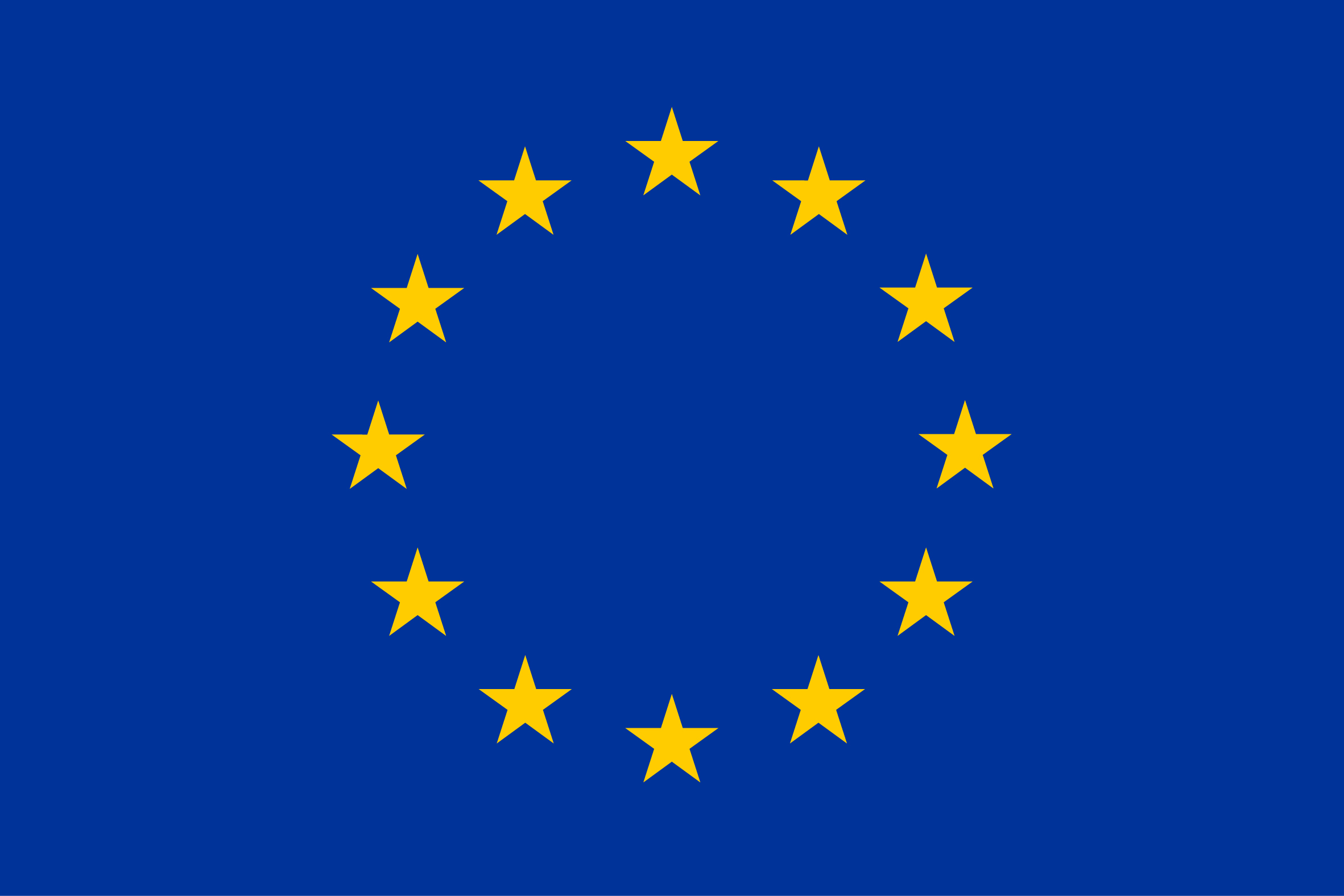Overseas

May 12, 2022
Imports Still Cheaper Than Domestic Prices, But Spreads Narrowing
Written by Brett Linton
Foreign steel imports continue to hold a competitive price advantage over domestic steel, albeit at a slightly lesser potential discount this week compared to last. According to SMU’s latest foreign versus domestic hot-rolled coil (HRC) price comparison, select foreign HRC prices range from $92-345 per ton ($4.6-$17.25 per cwt) cheaper than domestic prices, after taking freight costs, trader margins and tariffs into consideration. The price differentials between domestic HRC and foreign import prices have been growing since mid-March, when domestic prices briefly held a competitive advantage over foreign imports.
The following calculation is used by Steel Market Update to identify the theoretical spread between foreign HRC prices (delivered to US ports) and domestic HRC prices (FOB domestic mills). This is only a “theoretical” calculation because freight costs, trader margins, and other costs can fluctuate, ultimately influencing the true market spread. This compares the SMU US HRC weekly index to the CRU HRC weekly indices for Germany, Italy and Far East Asian ports.
![]()
In consideration of freight costs, handling, trader margin, etc., we add $90 per ton to all foreign prices to provide an approximate “CIF US ports price” that can be compared against the SMU US HRC price. Spot checks show freight for Southeast Asian imports into Houston costing between $100-110 per ton and costs for European products between $85-90 per ton. Buyers should use our $90-per-ton figure as a benchmark and adjust up or down based on their own shipping and handling costs as necessary.
Note that effective Jan. 1, 2022, the traditional Section 232 tariff no longer applies to most imports from the European Union. It has been replaced by a tariff rate quota (TRQ). Therefore, the German and Italian price comparisons in this analysis no longer include a 25% tariff. SMU still includes the 25% S232 tariff on foreign prices from other countries. We do not include any antidumping (AD) or countervailing duties (CVD) in this analysis.
Far East Asian HRC (East and Southeast Ports)
As of Wednesday, May 11, the CRU Far East Asian HRC price declined $36 per ton from the previous week to $744 per net ton ($820 per metric ton), down $100 per ton from one month prior. Adding a 25% tariff and $90 per ton in estimated import costs, the delivered price of Far East Asian HRC to the US is $1,020 per ton. The latest SMU HRC price average is $1,365 per ton, down $75 compared to one week prior and down $85 per ton from one month ago. Therefore, US-produced HRC is now theoretically $345 per ton more expensive than imported Far East Asian HRC. That differential peaked at $375 per ton last week and was $305 per ton one month prior. This is the ninth consecutive week foreign steel prices have held this price advantage. We briefly saw the opposite in February and March, when domestic HRC was $28-72 per ton cheaper than Far East Asian prices. The largest price spread between these regions was $847 per ton in September 2021, when Far East Asian prices held a considerable advantage.
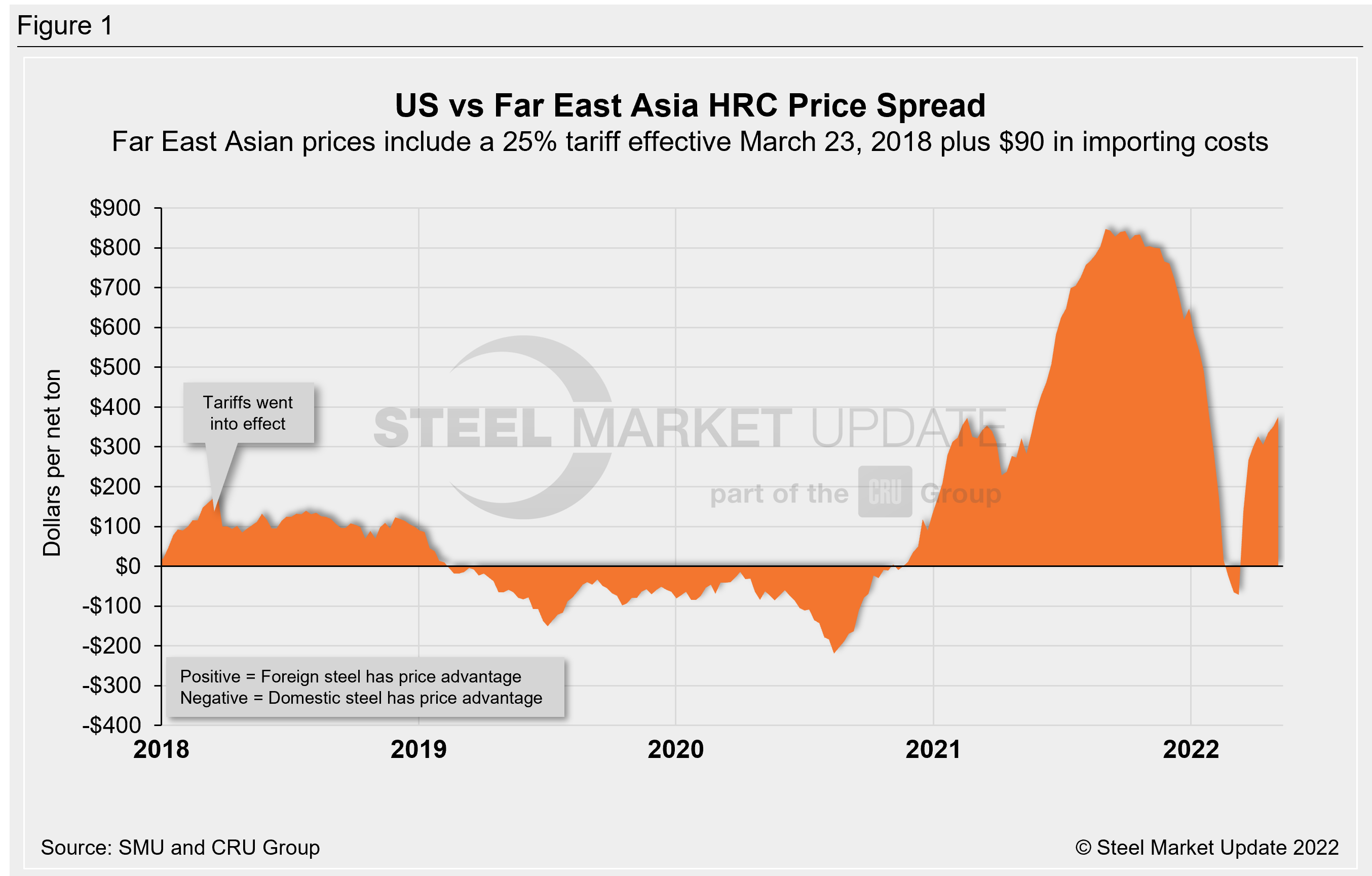
Italian HRC
CRU published Italian HRC prices at $1,128 per net ton ($1,243 per metric ton), down $43 per ton from last week and down $195 per ton from one month ago. After adding import costs, the delivered price of Italian HRC is approximately $1,218 per ton. Accordingly, domestic HRC is now theoretically $147 per ton more expensive than imported Italian HRC, compared to $179 per ton one week prior and $37 per ton four weeks ago. This is the eighth consecutive week foreign steel prices have held this price advantage. We briefly saw the opposite in the first half of March, when imported Italian HRC was $4-98 per ton more expensive. Prior to removal of the 25% Section 232 tariff, the November 2021 spread of $577 per ton was the largest seen in SMU’s data history.
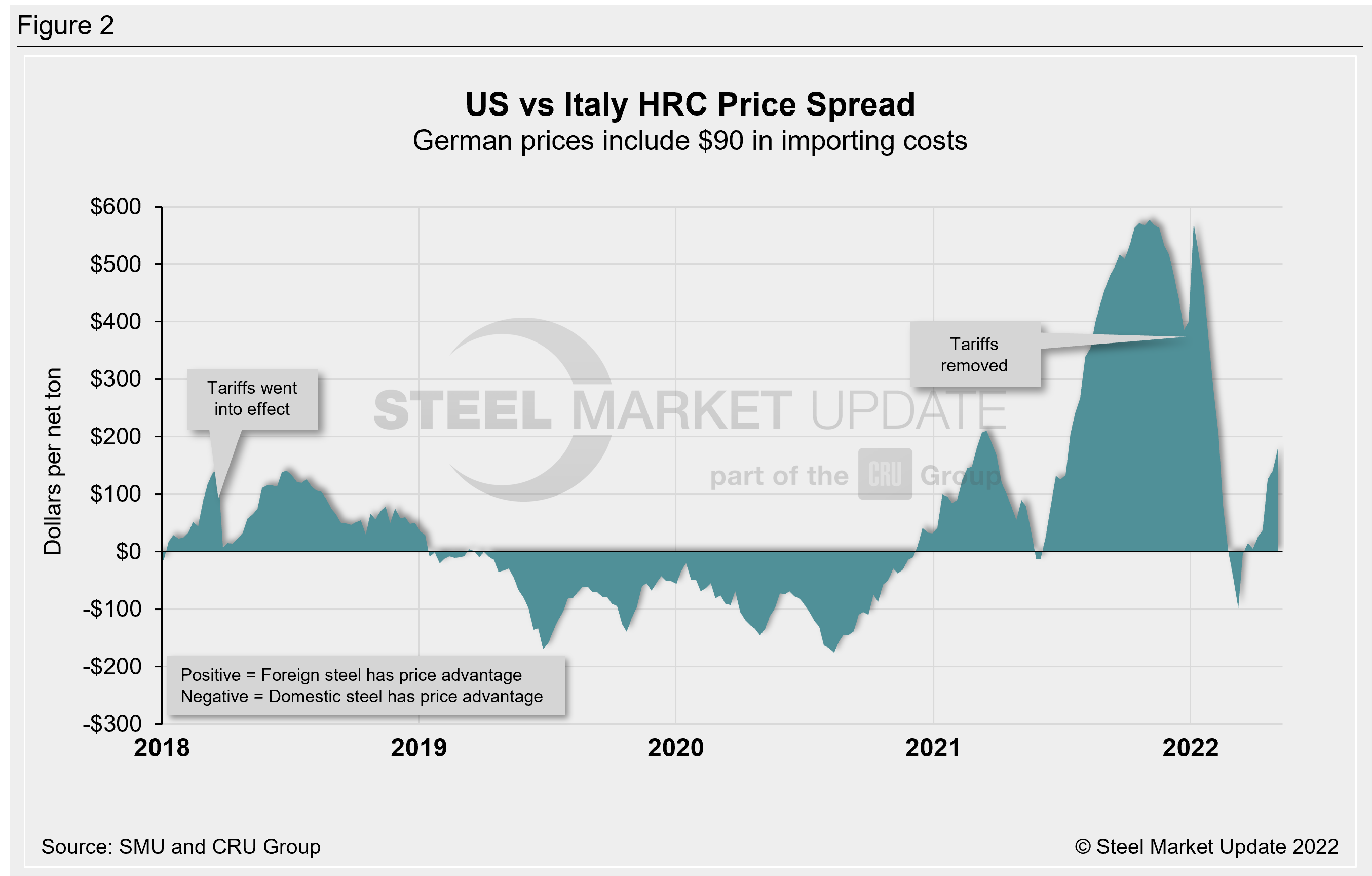
German HRC
The latest CRU German HRC price is $1,183 per net ton ($1,305 per metric ton), down $53 per ton from last week and down $204 per ton from one month ago. After adding import costs, the delivered price of German HRC is approximately $1,273 per ton. Accordingly, domestic HRC is theoretically $92 per ton more expensive than imported German HRC, down from a spread of $114 the week prior. We saw the opposite one month ago, when German prices were $27 per ton more expensive than domestic steel. This is now the fourth consecutive week German steel prices have held a price advantage. Prior to removal of the 25% tariff, the October 2021 spread of $504 per ton was the largest seen in SMU’s data history.
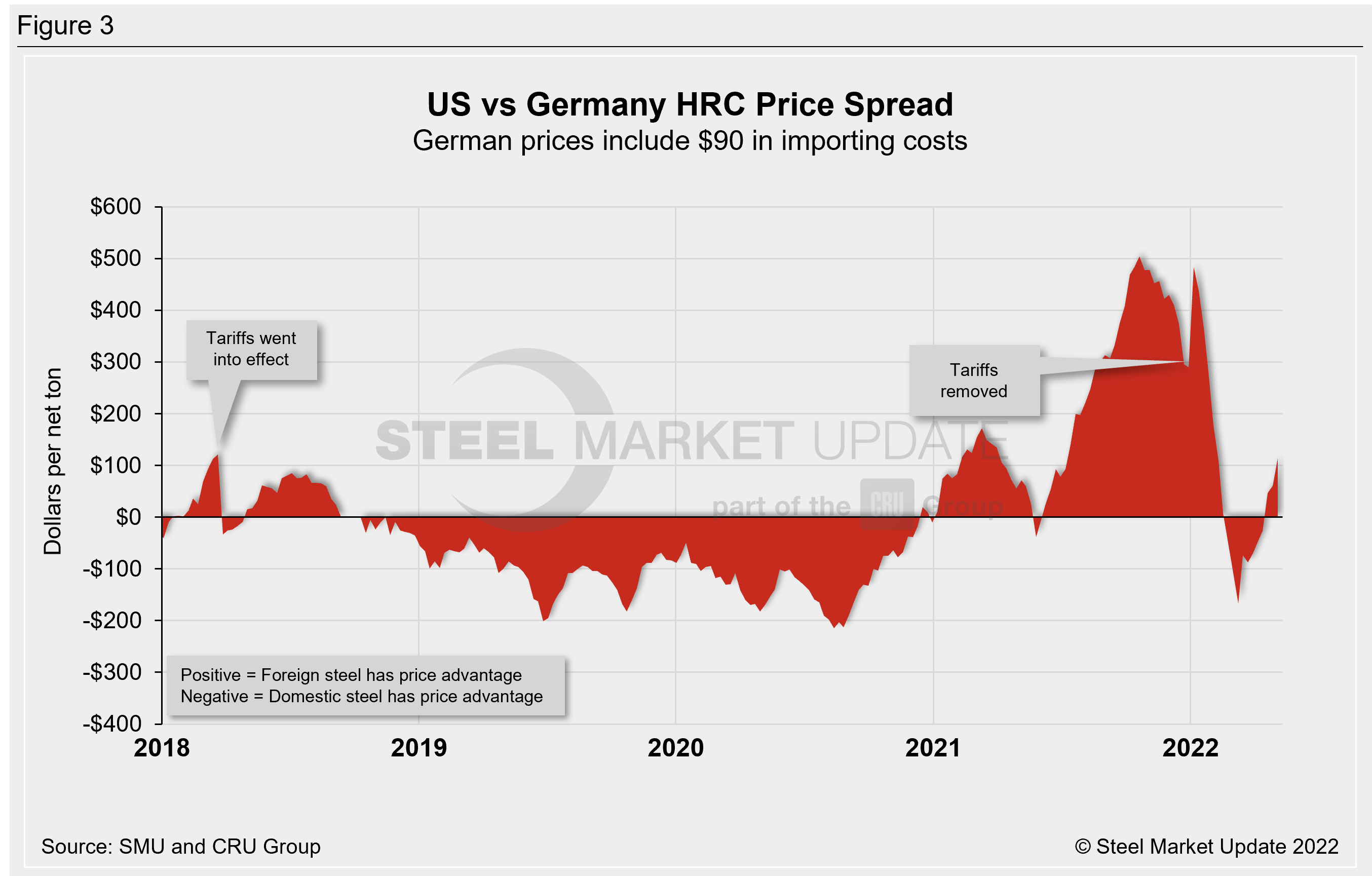
The graph below compares all four price indices and highlights the effective date of the tariffs. Foreign prices are referred to as “equalized,” meaning they have been adjusted to include importing costs (and tariffs in some cases) for a like-for-like comparison against the US price.
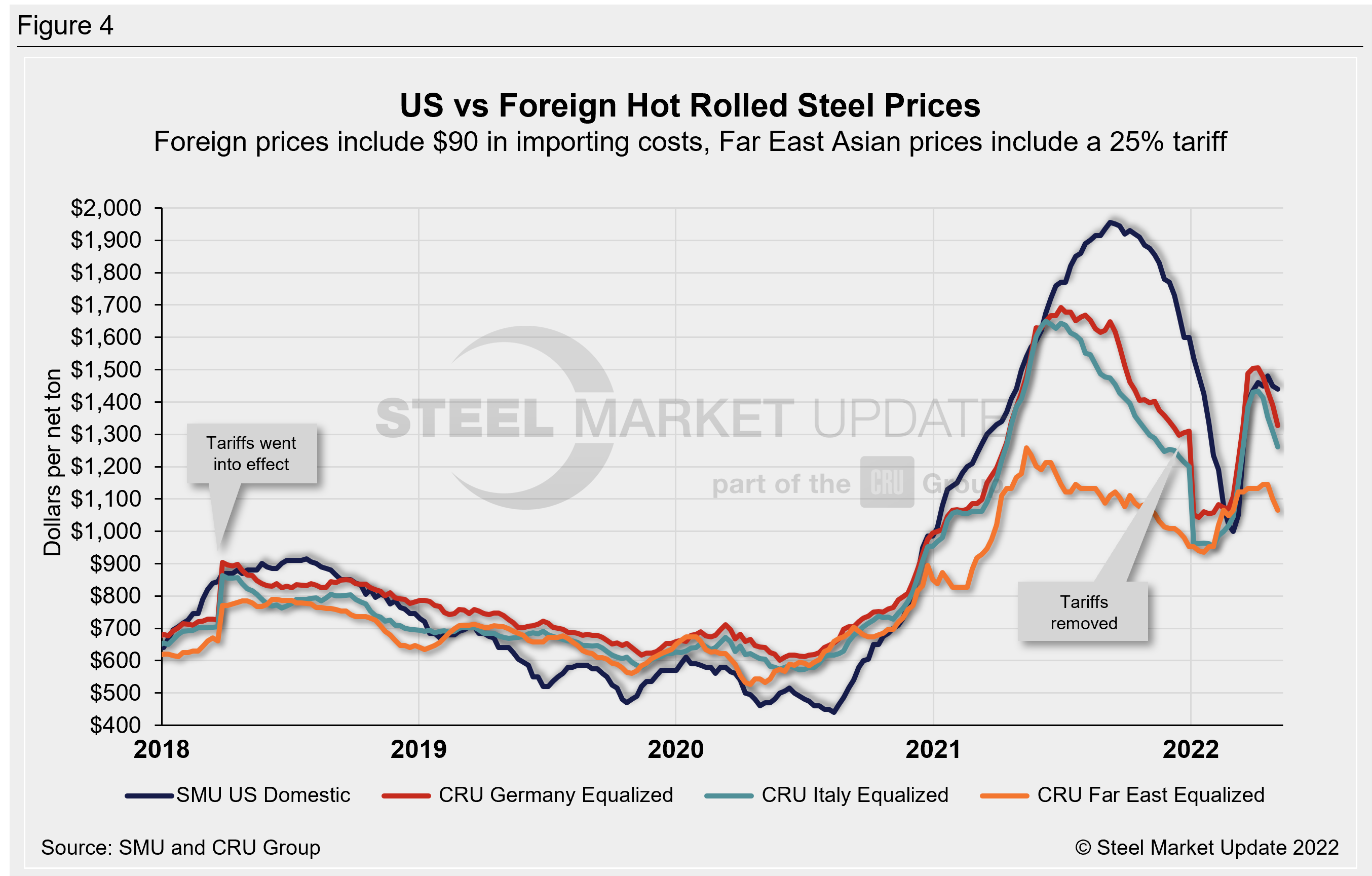
Note: Freight is an important part of the final determination on whether to import foreign steel or buy from a domestic mill supplier. Domestic prices are referenced as FOB the producing mill, while foreign prices are FOB the Port (Houston, NOLA, Savannah, Los Angeles, Camden, etc.). Inland freight, from either a domestic mill or from the port, can dramatically impact the competitiveness of both domestic and foreign steel. When considering lead times, a buyer must take into consideration the momentum of pricing both domestically and in the world markets. In most circumstances (but not all), domestic steel will deliver faster than foreign steel ordered on the same day.
By Brett Linton, Brett@SteelMarkeUpdate.com






